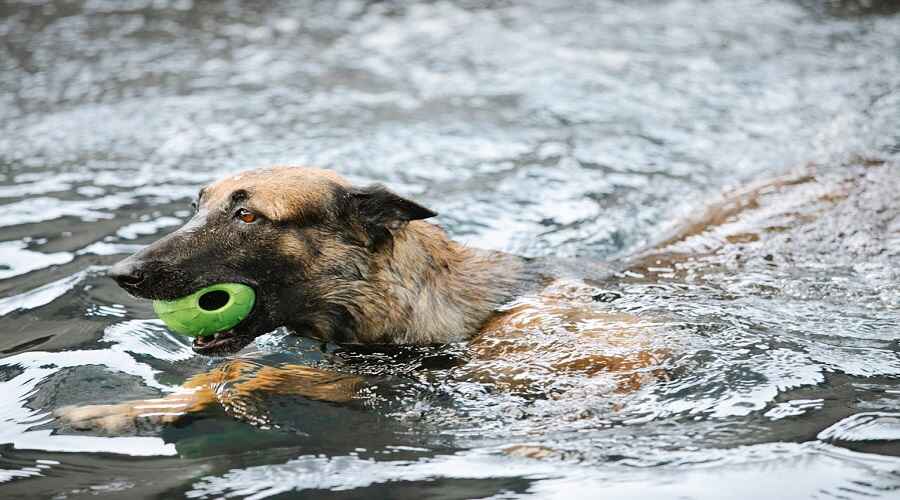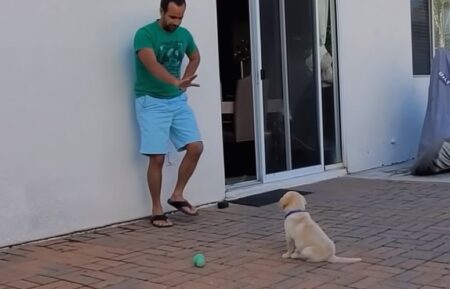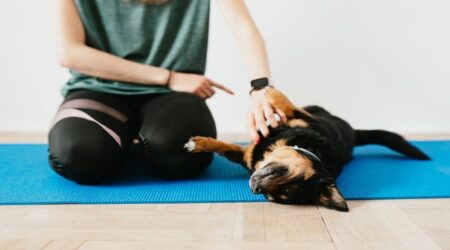Choosing the right amount of exercise for a dog is crucial for their general happiness, mental wellness, and physical health. Dogs require different amounts of exercise based on their breed, age, size, and health, but all dogs need some regular physical activity. Frequent exercise promotes cardiovascular health, prevents obesity, maintains muscle tone, and reduces behavioral problems brought on by boredom or excess energy. Exercise also offers mental richness and stimulation enhancing the general quality of life of a dog. But the precise quantity of exercise needed varies greatly from dog to dog. While certain breeds may do well with shorter walks or play sessions, others may require more strenuous activity, like as agility training or jogging. You can better adjust your dog’s exercise regimen to suit their demands if you are aware of their breed traits, activity level, and preferences. Seeking advice from a veterinarian or certified dog trainer can help you determine the right amount of exercise for your dog’s individual needs.
How Much Daily Exercise Does a Puppy Need?
Puppies need to exercise every day to maintain their mental and physical growth. Breed, age, and size are some of the variables that affect how much exercise a dog needs. Puppies generally benefit from multiple brief activity bouts spread out throughout the day. When it comes to very young puppies, try to get at least 15-20 minutes of controlled playing or light exercise in, and as they become bigger, progressively increase that time to 30-60 minutes. The best activities are supervised socializing with other dogs, short walks, and interactive play. However, as young puppies’ bodies are still developing and are more prone to weariness and injury, it’s important to prevent overexerting them. You should modify your puppy’s exercise regimen based on their behavior.
How Much Exercise Does an Adult Dog Need?
It usually takes an adult dog between thirty and two hours of activity per day, depending on the breed, size, age, and overall health. High-energy breeds, like Huskies or Border Collies, could require more than two hours of intense exercise, such as jogging, fast walks, or engaging playtimes. Conversely, smaller or less energetic breeds could be content with 30 minutes of moderate exercise, such playing inside or taking short walks. Frequent exercise benefits adult dogs’ general wellbeing by preventing behavioral problems, fostering cardiovascular health, helping them maintain a healthy weight, and stimulating their minds.
How Much Exercise Does a Senior Dog Need?
Although older dogs usually don’t need as much exercise as younger dogs, exercise is still vital to older dogs’ health and wellbeing. Senior dogs may benefit from 30 to 1 hour of light exercise every day, depending on their health. This can be light playtime, quick strolls, or low-impact exercises like swimming or easy stretches. But it’s crucial to modify the length and intensity of exercise according to personal demands and age-related health conditions, including arthritis or mobility problems. Senior dogs benefit from regular, customized exercise in maintaining their general quality of life, mental stimulation, joint flexibility, and muscle tone.
Tips on Dog Exercise
To keep your dog happy and healthy, follow these exercise recommendations.:
Know Your Dog’s Needs: Adjust your dog’s exercise regimen based on their breed, age, size, and energy level.
Start Gradually: If your dog has not exercised before or has been sedentary, begin with brief, easy walks or play sessions. As time goes on, increase the length and intensity of the sessions.
Mix It Up: Add exercises like walking, running, hiking, swimming, fetch, or agility training to your dog’s schedule to keep it interesting and different..
Take Mental Stimulation Into Account: Training sessions, puzzle feeders, and interactive toys can fatigue your dog just as much mentally as physical activity.
Look Out for Signs of Fatigue: If your dog exhibits signs of exhaustion, such as heavy panting, trailing behind, or running for cover, stop their exercise immediately..
Give Your Dog Enough Rest: To avoid overexertion and muscle strain, give your dog plenty of downtime in between workouts.
Remain Safe: To safeguard your dog’s health and well-being, exercise in secure areas, wear appropriate gear, such as collars and harnesses, and stay out of extremely hot or cold weather.
You can make sure your dog gets the proper kind and quantity of exercise to maintain their health, happiness, and balance by paying attention to these pointers.
Indoor Dog Exercises
Exercises for dogs inside are crucial, particularly in bad weather or for dogs who might not have access to outdoor areas. Here are some suggestions for indoor activities for your pet:
Hide and Seek: To promote mental and physical excitement in your dog, hide toys or treats about the house for them to find.
Indoor Fetch: Play fetch indoors with soft toys or balls, taking care to avoid breaking anything and to leave enough room for a safe play area.
tug-of-war: Use a strong rope or tug toy to play tug-of-war with your dog. It’s an entertaining and interactive exercise.
Stair Climbing: Encouraging your dog to properly ascend and descend stairs can be a low-impact cardio exercise.
Agility Course: To enhance coordination and agility, set up an indoor agility course with seats, cushions, and tunnels.
Obedience Training: Include obedience training sessions in your dog’s regimen. Your dog will benefit from mental and physical exercise as they practice commands like sit, remain, and come.
Interactive Toys: To keep your dog active and interested, get them interactive toys that either give goodies or require them to solve puzzles.
You can make sure your dog is emotionally and physically occupied even when indoors with these indoor exercise choices.
The consequences of under-exercising your dog
Under-exercising your dog can have various consequences, impacting their physical health, mental well-being, and behavior. Here are some potential consequences:
Weight Gain: Insufficient activity can cause dogs to gain weight and become obese, which raises their risk of developing a number of illnesses include diabetes, heart disease, and joint problems.
Boredom and Anxiety: In order to maintain mental and physical well-being, dogs require mental and physical stimulation. Dogs who receive insufficient exercise may grow bored, nervous, or irritated.
resulting in harmful actions such as excessive barking, digging, or chewing.
Behavioral Problems: Dogs who are overly excited are more prone to display aggressive, hyperactive, or attention-seeking behaviors. Exercise done correctly relieves surplus energy and encourages more composed conduct.
Reduced Muscle Tone and Flexibility: Dogs need to exercise regularly to preserve their overall mobility, joint flexibility, and muscle tone. Dogs that receive insufficient exercise may eventually lose muscular mass and range of motion.
Decreased Quality of Life: Dogs who don’t get enough exercise may live shorter lives since they don’t receive the mental and physical stimulation they require to flourish. They can start acting sluggish, uninterested, or reclusive.
Make sure your dog gets enough daily activity suited to their breed, age, size, and energy level to avoid these negative effects. Your dog needs regular walks, playtime, and interaction activities to stay healthy, happy, and balanced.
Conclusion
Your dog’s behavior, mental health, and physical health may all suffer as a result of under exercising them. Dogs need to exercise on a regular basis to keep their weight in check, avoid anxiety and boredom, encourage good behavior, and maintain their muscle tone and flexibility. Dogs who don’t get enough exercise may gain weight, have behavioral problems, lose muscle mass, and have shorter lives. Giving your dog the right kind of exercise every day that suits their demands is crucial for their general well-being and health. You can contribute to your dog’s active and happy life and strengthen the link between you and your pet by taking regular walks, play dates, and interactive activities.






